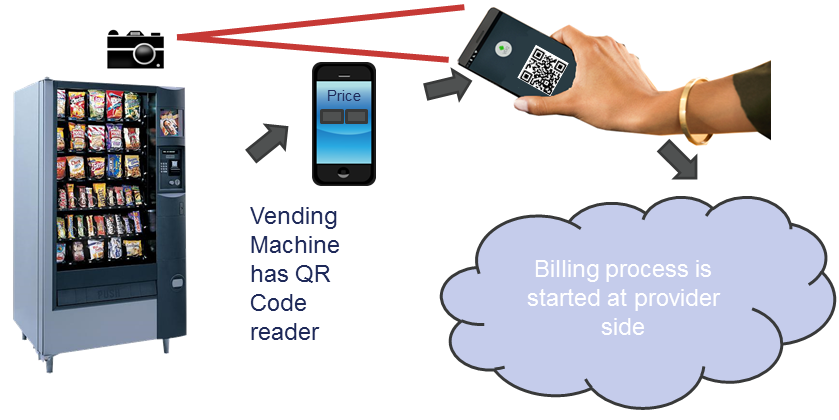Digitalization is and has been a very hot topic for the last years. Current IT trends like Internet of Things, Mobile and Cloud drive innovation and, therefore, push new business models as well as IT support for business processes. Today, a technical foundation exists that supports businesses in a way that, technically, was not possible a few years ago. Classic business models and domains are under pressure and stressed by new ideas. These have the power to completely replace the classic business models. A famous conflict in this area is, for example, the classic model of taxi companies versus Uber.
It is not really surprising that new ways for billing and payment are researched in this area as well. This resulted in the term Mobile Payment which describes the possibility to pay via a smartphone. It promises new ways of interaction and additional services. Currently, there are three Mobile Payment scenarios on the market which may be interesting for you and your company.
Nowadays, smartphones are companions which provide access to a huge amount of information and services while on the go. Smartphones already changed the way we surf the web as people tend to receive information directly instead of doing Internet research. If anything is unclear, a specialized app on the mobile gives the answer. People rather forget their keys than their smartphone. Therefore, payment scenarios or Mobile Payment are just a logical consequence.
Scenario 1 „“ direct payment
Modern Google, Apple and Samsung phones have NFC capabilities and contain an API for payment (SamsungPay, ApplePay, AndroidPay). Internally, these APIs differ, although their concept is similar. Providing billing information to the API providers, the smartphone is capable of simulating credit or debit cards which support contactless payment. This is often offered at cashpoints. Basically, your phone acts like a credit or debit card while it is swiped over a contactless payment terminal.
The huge advantage of such a solution is that as soon as contactless payment is used, it does not matter if somebody pays by card or phone. The complexity is handled by the API and app provider.
Chances
- Big players as providers
- Future-proof
- Standard NFC based cards may be used as well
Challenges
- Not accepted by all users, e.g. Germany
- Changes at hardware may be necessary
- Security and data
Scenario 2-indirect payment
Alternatives are provided for smartphones which do not support NFC. The interaction and communication is mainly based on QR Codes. Nevertheless, other technologies can be used to identify yourself or your bought goods at payment terminals.
If a marker is shown on a phone, it basically acts like a receipt. It does not really matter when and where you bought something. With the help of the marker on your phone you can collect goods at shops, terminals and machines. This can be interesting for webshop scenarios.
If markers are shown on a cashpoint or machine, they are mediums for communication. Typically, the marker initiates the billing process. After authorizing the payment to be correct with a PIN the final payment is started.
Chances
- Probably easier to integrate in processes
- Shop and collect scenarios are supported
Challenges
- Not accepted by all users, e.g. Germany
- Usage is more complicated
- Display is needed at selling point
Scenario 3 – custom app
This leads us actually to the last scenario. It is the most complex way for mobile payment but it also promises the most benefits: the development of a custom built app. As soon as an own API and structure is used processes can be met best. The provider holds the responsibility over the architecture and data. With the help of modern customer analysis based on frequently gathered data from user interactions with the app, user profiles, personal advertisement, trends and much more can be computed. Of course, one has to think about the effort to implement such as solution and the data has to be kept.
- Be a pioneer and support transformation at your company
- Supports new business models
- Tightly coupled to processes
- Personalization possible
Challenges
- Additional effort for conception and development
- Changes at software and hardware are likely
Conclusion
The current field of mobile payment APIs and services are fragmented and complex. It can be difficult to find the right solution for you needs. Nevertheless, there are huge advantages especially when correlating gathered data with the company“™s business processes. This is where the action is! These digital solutions make it possible to gather information about users, user interactions and the service itself which makes it possible to improve the service continuously. New business models and products can arise. Therefore, mobile payment can be an interesting way to start with innovation and digitalization or to think about new ideas.






